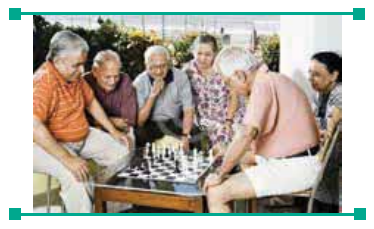Human Development and its Challenges - Old age - Personal and social adjustments | 11th Home Science : Chapter 2 : Human Development and its Challenges
Chapter: 11th Home Science : Chapter 2 : Human Development and its Challenges
Old age - Personal and social adjustments
Old age – Personal and social
adjustments
The time at which old age begins is still ill
defined. Sixty years is taken as the arbitrary dividing line.
Age divisions during old age:
a. The young -old (60-69 years) This is a transition period
marked by many adjustments such as retirement and declining strength, sharp
reduction in expectation and behaviours.
b. Middle-aged old (70-79 years) This period is
characterized by increasing deaths of friends and spouse, reduced participation
in home and community activities, increasing health problems, contracting
social world.
c. Old (80-89 years) In this period, assistance is needed
in maintenance of social contacts, there may be many health problems and some
may become institutionalized or may lead a very sheltered life.
d. Very old ( 90 years and above ) Health problems are more severe and seri-ous with very limited activity
in this period.

Challenging Areas That Require Adjustments during Old Age
There are several challenges in different
areas of old age which require adjustments and intervention. For the purpose of
better understanding it can be discussed at four levels- biological,
psy-chological, sociological or psychological or behavioural.
Biological aging and its
challenges–
It includes changes in sensory- motor performance,
muscle strength, brittleness of skeletal structure, visual acuity and decreased
reaction time and balance. These are examples of bio-logical aging which may
influence attitude and behaviour.
Psychological aging and its
adjustments – This consists of a general decline in the mental
abilities that accom-pany old age.
Sociological aging and its
challenges – It refers to changes in social roles- loss of spouse,
vulnerability to dis-ease, compulsory or voluntary retirement, loss of income
and loss of status.
Psycho- social aging and its
challenges – It refers to systematic changes in personality needs,
expectations and behaviours as well as changes in roles and changes in relation
to others.
Specific Psychological Problems Faced By Old People
·
Feeling of inadequacy.
·
Lack sense of belonging and acceptance.
·
Economic insecurity.
·
Changing social attitudes
·
Feeling of loneliness, uncertainty, restlessness.
·
Feeling tired and depressed.
·
High on anxiety.
·
Low self-esteem and worthlessness
Adjustments in old age
Some of the adjustments people have to make as
they move into old age include:
Health adjustment: One of the threats to the elderly is prolonged illness. The aging body is
highly vulnerable to ravaging diseases and injury. The psycho-logical stressors
of old age can also pro-voke psychological disorders.
Adjustment to retirement
Retirement is separation from a sphere of
activity that has provided special social order, economic remuneration,
personal identity and prestige for many years. The abrupt termination of one’s
livelihood may be a great threat to the old people; a welcome relief to some
from tedious thankless jobs or a natural conclusion of one’s successful career.
It may pro-vide more time for some to pursue their dreams and pleasurable
activities.
1st October is celebrated as the International Day for Elderly
People each year.
Coping with the Problems Faced During Old Age
Different people adopt differ-ent coping
strategies to meet their life challenges. Some of the effective coping strategies
may be summarized as follows:
1.
The elderly need to develop an attitude of flexibility so that
they may adapt to life’s pressures and problems of old age.
2.
They need to recognize that they have to explore new ways of
coping with their life events.
3.
The elderly need to make greater use of “information seeking”
and of “problem solving” rather than withdrawing or isolating.
4.
They need to enhance their self-confidence, self reliance,
develop healthy attitude about their strengths and weaknesses as well as
learning and maintaining effective coping skills
5.
Participate in various group activities such as joining clubs
and certain organizations for informal social interaction is very helpful for
the aged.
6.
Involvement in grand parenting helps the elderly satisfy many of
their personal and emotional needs.
Related Topics